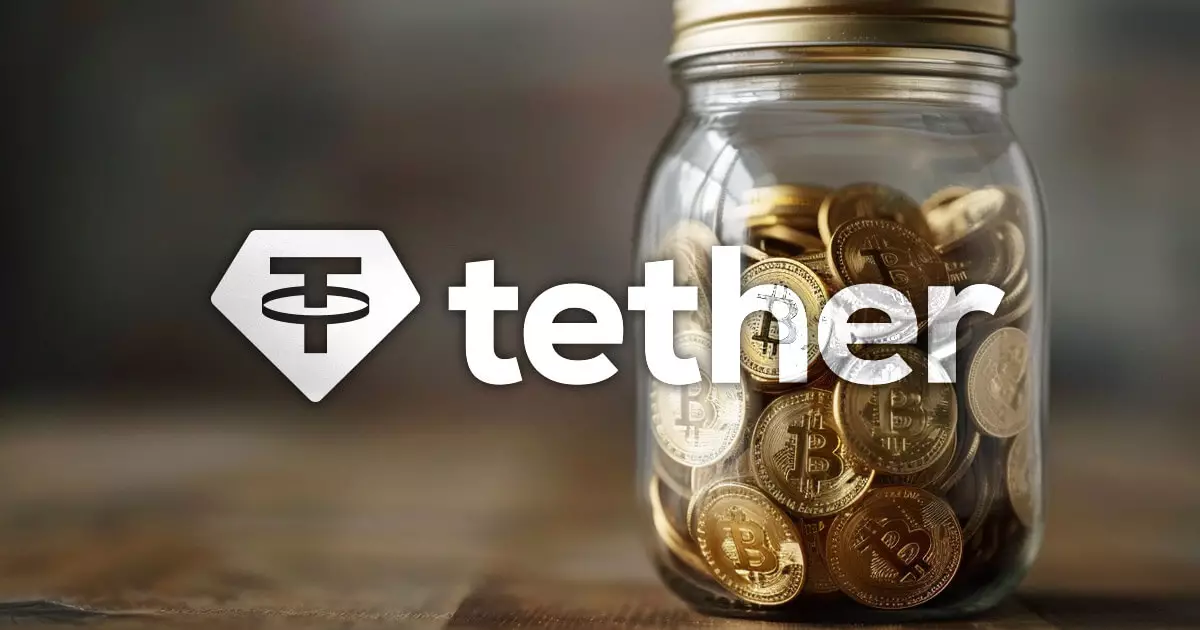In a significant development within the cryptocurrency landscape, Tether, the issuer of the USDT stablecoin, has made headlines by increasing its Bitcoin holdings by an impressive 7,629 BTC. This acquisition, represented on-chain by Arkham Intelligence, equates to approximately $705 million, pushing Tether’s total Bitcoin assets to approximately 82,983 BTC valued at around $7.68 billion. With this latest purchase, Tether has cemented its position as the sixth-largest holder of Bitcoin globally, as outlined through Bitinfocharts data. This expansion reflects Tether’s ongoing commitment to strategically position itself in the volatile cryptocurrency market while diversifying its reserve portfolio.
Tether’s modus operandi involves deploying 15% of its quarterly profits to bolster its Bitcoin holdings. This investment strategy, initially revealed in May 2023, demonstrates Tether’s proactive approach in adapting to fluctuating market conditions. Instead of solely relying on traditional reserve assets like cash or bonds, Tether’s approach signifies a pivot towards cryptocurrencies, aligning with a broader industry trend of leveraging digital assets. By consistently increasing its Bitcoin reserve, Tether not only seeks to enhance its stability and liquidity but also fortifies its market presence as the demand for secure stablecoins continues to grow.
However, Tether’s impressive growth comes against a backdrop of increasing regulatory scrutiny, particularly within the European Union. New regulations impose strict requirements on stablecoin issuers, introducing mandates that may impose operational limitations. One particularly contentious regulation involves a 30% reserve requirement mandated to be held in traditional financial institutions. Critics, such as Quinten François, co-founder of WeRate, argue that such red tape could stifle Tether’s operational efficiency. By constraining the flexibility of asset management, these regulations could undermine Tether’s capacity to generate revenue through more lucrative investments, such as US Treasuries.
Despite these challenges, regulatory experts like Jonathan Galea from BCAS IO suggest a more nuanced view of Tether’s regulatory obligations. Galea asserts that stablecoins not actively advertised or offered to the public within the EU, such as USDT, may not be subject to the stringent MiCA authorization. This perspective implies that Tether may navigate through regulatory landscapes with relative ease, as trading platforms can facilitate trades in assets without necessitating direct engagement from issuers. Such dynamics could indicate that the compliance concerns surrounding Tether’s operations might be exaggerated, allowing the company to maintain a stronger foothold in the European market without complete adherence to every imposed regulation.
Tether’s recent Bitcoin acquisition exemplifies its ambitious strategy to solidify its standing as a prominent player in the cryptocurrency ecosystem. While facing regulatory pressures, Tether’s proactive approach to diversifying its asset base could provide it with significant resilience against market fluctuations. As the cryptocurrency landscape continues to evolve, Tether’s ability to adapt to regulatory challenges while capitalizing on its investment strategy will be crucial for its sustained success in this dynamic environment.



















Leave a Reply